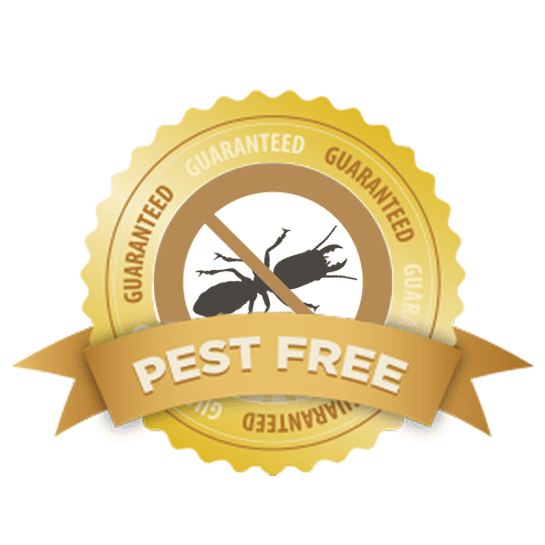A1 Bed Bug Exterminator Charlotte - Specialized Bed Bug Elimination
Wiki Article
Bed Insect Therapy Failure: Comparing Chemical Vs. Non-Chemical Solutions
In the world of pest control, especially when taking care of the consistent concern of bed bugs, the option in between chemical and non-chemical treatment options can be a crucial one. Both methods offer unique benefits and disadvantages, affecting elements such as effectiveness, safety considerations, and general price. By analyzing the nuanced information of each approach, a more clear understanding of which course to go after in dealing with a bed insect invasion can be attained.Effectiveness of Chemical Therapies
Chemical treatments for bed insect problems have actually been widely identified for their potent and rapid efficacy in eradicating these parasites. When considering the effectiveness of chemical therapies, it is critical to comprehend that they can provide a fast and comprehensive service to a bed pest problem.Furthermore, chemical therapies have the advantage of supplying residual results, indicating that they can continue to remove bed insects also after the preliminary application. This recurring action is specifically helpful in combating any potential re-infestations. Furthermore, the fast activity of chemical treatments can bring alleviation to people dealing with severe bed insect invasions, allowing them to restore control of their living spaces swiftly.
Security Worry About Chemical Solutions
When utilizing chemical remedies for bed pest therapy is ensuring the safety of owners and the environment,One vital facet that calls for mindful consideration. While chemical treatments can be effective in removing bed insects, they may position risks if not dealt with correctly. Among the key security interest in chemical options is the prospective harm they can cause to human health. Direct exposure to particular chemicals made use of in bed pest therapies can result in breathing problems, skin irritation, or various other damaging reactions, particularly in individuals with pre-existing problems or sensitivities. Furthermore, improper application or dose of chemical pesticides can lead to harmful residues lingering in the treated location, posturing long-lasting health and wellness threats to owners.Moreover, the ecological influence of chemical services is an additional substantial consideration. Some chemicals made use of in bed insect therapies might be damaging to useful pests, wildlife, and ecological communities if they seep right into the soil or water supply. It is necessary to use chemical treatments deliberately, complying with safety standards, and thinking about much less toxic options to alleviate these risks and make sure the effective and secure management of bed insect invasions.
Advantages of Non-Chemical Methods
Considering the potential safety and security worries and environmental effect connected with chemical solutions for bed pest treatment, exploring non-chemical techniques presents an encouraging option with several distinct benefits. Non-chemical therapies are ecologically friendly, as they do not add to air or water air pollution, making them a sustainable selection for insect control.Furthermore, non-chemical options can be efficient in targeting bed insects, including hard-to-reach locations where chemical treatments may not permeate. Approaches such as warm treatment, vacuuming, vapor cleansing, and cushion encasements provide complete elimination without using dangerous chemicals. Furthermore, non-chemical strategies can be less turbulent, requiring marginal preparation and permitting quicker reentry into dealt with areas. On the whole, deciding for non-chemical bed insect treatment approaches not only focuses on safety and ecological defense however likewise guarantees detailed and effective pest control.
Limitations of Non-Chemical Treatments

Furthermore, non-chemical treatments usually require several applications to attain successful removal. This can be taxing and may not constantly assure full elimination of all bed pests and their eggs, particularly in hidden or hard-to-reach locations.
Furthermore, the success of non-chemical therapies greatly relies upon appropriate execution and thoroughness, which can be challenging for people without specialist experience. Inadequate application of non-chemical methods might lead to insufficient obliteration, leading to consistent invasions and the need for additional treatments.
As a result, while non-chemical therapies have their benefits, it is necessary to acknowledge these constraints and consider them when figuring out one of the most efficient approach for this page managing bed bug infestations.
Expense Contrast: Chemical Vs. Non-Chemical Options
Given the limitations related to non-chemical therapies, a necessary element to assess in the context of bed insect administration is the cost comparison between chemical and non-chemical choices. Chemical treatments typically involve the application of pesticides by experts, which can range from $250 to $900 per room, relying on the extent of the invasion and the size of the location to be dealt with. On the other hand, non-chemical treatments like warmth therapy or heavy steam can be a lot more expensive, with costs varying from $1,000 to $6,000 for a whole home. While the initial expense of chemical treatments might seem reduced, numerous therapies may be called for to completely eliminate the invasion, potentially enhancing the overall price. On the other hand, non-chemical alternatives might supply a much more eco-friendly and lasting option, although they can be cost-prohibitive for some individuals. Inevitably, when considering the price of bed insect treatment options, it is essential to evaluate the ahead of time costs versus the efficiency and lasting sustainability of the selected method.Final Thought

Taking into consideration the potential security eco friendly pest control concerns and ecological influence associated with chemical options for bed pest treatment, discovering non-chemical approaches provides an encouraging alternative with a number of distinctive benefits.Provided the Get More Info constraints associated with non-chemical treatments, an important aspect to review in the context of bed bug management is the expense contrast in between chemical and non-chemical options. In comparison, non-chemical therapies like warmth treatment or steam can be extra costly, with prices ranging from $1,000 to $6,000 for an entire home. While the initial expense of chemical therapies may seem lower, several therapies may be needed to totally eradicate the infestation, potentially boosting the total expense.In verdict, when contrasting chemical and non-chemical bed pest therapy alternatives, it is vital to consider efficiency, security, benefits, restrictions, and expense.
Report this wiki page